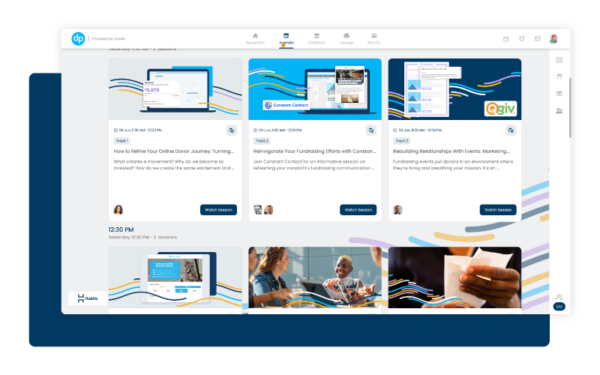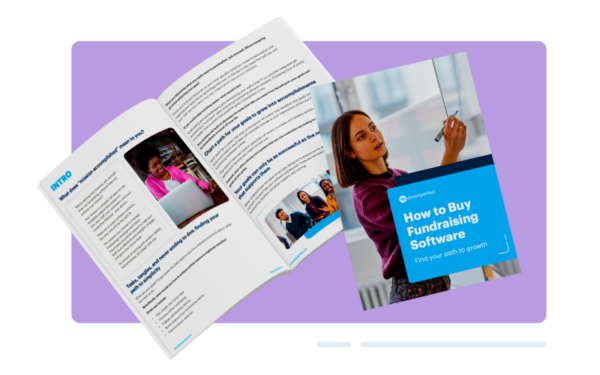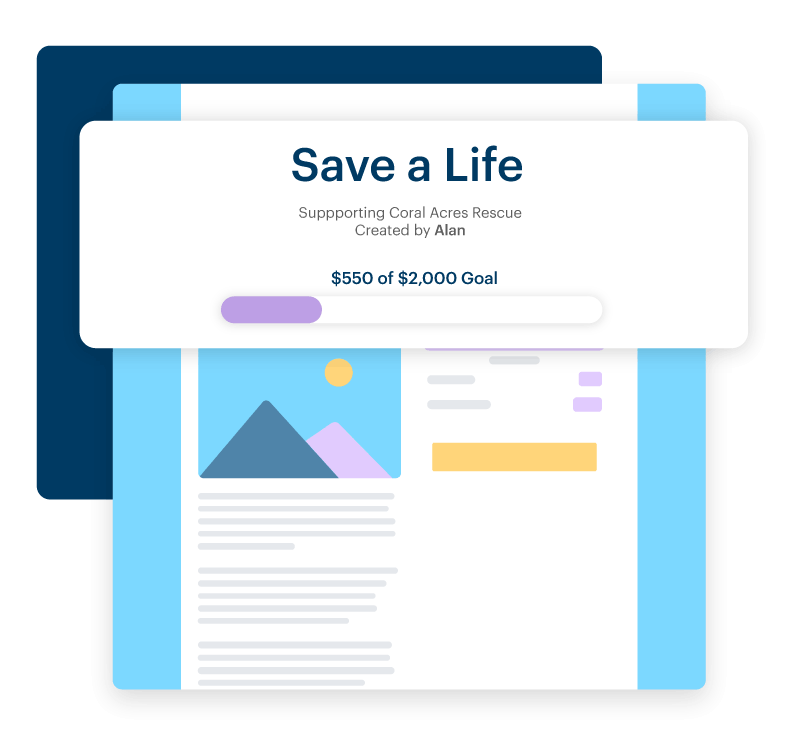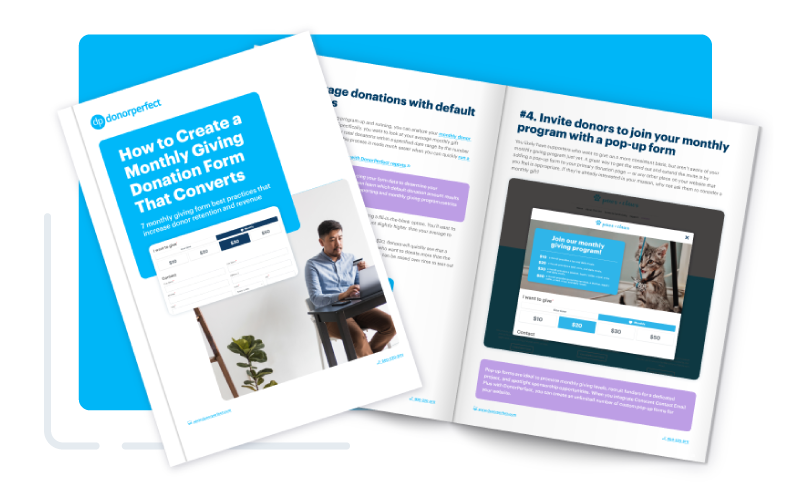
April 25, 2024

July 7, 2023 | Categories DonorPerfect Fundraising Software, Featured, Fundraising Strategies
If you’re the sole fundraiser, passionate founder, or full-time volunteer of a small nonprofit, you already know how to turn a little into a lot. You’ve got a special type of drive, grit, and determination that elevates communities and makes real, positive change in people’s lives.
But as dedicated as you are to your mission, you don’t have endless supplies of energy or resources. When you shift your mindset from one of working “hard” to one of working “smart,” you can save yourself from burnout while hitting your fundraising goals. Here are six tips to get started.
If you’re comparing your results to those of a massive nonprofit with hundreds of staff members, you’re never going to recognize or celebrate your very real successes. Look around your community and online to find like-minded fundraisers and other nonprofit professionals you can lean on for help, support, and general friendship. Here are four people to consider having in your network:
Stuffing envelopes and prepping meeting packets is a lot more fun when you have someone you can meet up with or hop on a video call. Making friends with someone who works at another, unrelated nonprofit gives you both someone to lean on, someone to celebrate with, and someone who gets what you’re going through. Ideally, you’re not connected to each other’s colleagues or donors, so when you need to vent, you have a safe space to do so (not a bad idea to use fake names, though!).
Take note of any striking stories you see in publications like the Chronicle of Philanthropy or other nonprofit-specific newsletters. Would you like to try your hand at planned giving? How about using direct mail or digital fundraising to build a robust annual giving pipeline? If you’re new to these skills, try finding someone locally to meet up with occasionally to pick each other’s brains. Don’t forget, you bring unique skills and ideas to the table, too – rather than worry about being seen as burdensome for asking for help, think of this relationship as time to exchange experiences that you can both learn from.
Fundraising and nonprofit work can bring up a lot of tough ethical questions. Do you ever turn down gifts from donors because of their behavior? Or do you believe that all gifts are valid because of the good they can do in your capable hands? There’s no right answer, and someone with more industry experience can help guide you through sticky situations you may not have anticipated yet.
What better way to learn about donors’ experiences and preferences than a donor themself? Of course, getting to know your own donors is vital to your fundraising efforts, but when talking with donors to other organizations, you lower the stakes, giving you and the donor emotional space to get candid. No giver speaks for all donors, but getting the inside scoop on what donors really want to see and experience can help take your fundraising strategy to the next level.

On top of professional networks like the Association of Fundraising Professionals (AFP), you can meet and network with other fundraisers at free conferences and webinars, like the annual DonorPerfect Community Conference.
Figuring out where to spend your limited monetary budget can feel just as challenging as figuring out where to spend your limited time. When it feels like every task demands your immediate attention, it may be time to audit your time and tools to see where you can offload or automate your workload.
Here are some questions to ask yourself to determine what types of tools you need, and what you can comfortably put off until your next budget cycle.
As a general rule, any technology that can perform rote tasks for you is worth looking into, and it’s vital to pick tools that are accurate and reliable so you don’t have to duplicate any work. For lists and more ideas for free and low-cost tools trusted by other nonprofits, check out 9 Free or Cheap Tools for Your DIY Nonprofit Marketing and 5 Free Fundraising Tools Loved By Nonprofits to see where you can save without cutting corners.

Thinking of upgrading from spreadsheets to an all-in-one fundraising management software? Check out the free guide, How to Buy Fundraising Software.
In a recent op-ed in the Chronicle of Philanthropy, one donor lamented the fact that many of his gifts in the $1,000 – $5,000 range go unacknowledged by the nonprofits he supports. He isn’t inclined to give again to these nonprofits, as he wants to be included in their mission as an active and valued partner.
Some research shows that it’s up to ten times more expensive to acquire a new donor than it is to retain a current donor. Rather than scramble to try to find new donors year after year, you’ll save and raise more money if you focus more of your attention on the people who already love and support your mission.
Want a low-cost, creative way to thank your donors? Try sending a thank you video to groups or individuals! This personal, visual approach can help you stand out among other nonprofits and stick in your donors’ minds as the best organization to support.
Crowdfunding and peer-to-peer fundraising give your most passionate supporters an outlet for their love of your mission. By outsourcing some of the fundraising work to volunteers, you’ll be able to tap into their networks of friends and family, and you’ll give them the opportunity to give back in a way that makes them proud to be part of your community.
Be sure to pick a user-friendly crowdfunding platform that allows your champions to set up and manage their own pages with ease, while keeping everything running smoothly on the back end. Giving and asking for gifts can be a joyful experience that helps your volunteers feel even more connected to your organization, and crowdfunding is a low-cost and high-reward avenue for donor acquisition.

If your nonprofit has been around for a while, are there any activities you do every year because “that’s the way we’ve always done it?” Lots of expensive fundraising activities, like galas and other formal events, are falling out of fashion and your donors won’t miss them if you take a break or cancel an event entirely.
Instead of a sit-down dinner with all of the trimmings, you could try hosting an “ungala” or even send a cheeky appeal letter, like one explaining that parents could send a donation instead of spending hours running an unreliable cotton candy machine at the school carnival.
Consider which fundraising activities take the most of your time and energy, and whether each activity raises enough money to make it worthwhile. Don’t be afraid to cut the activities that aren’t effective – by protecting your time and energy, you’ll be able to dedicate your brain space to the most effective fundraising techniques, and have room left over for innovation.
Many donors enjoy the convenience of monthly and recurring giving. It allows them to give more throughout the year than they might be able to in one lump sum, and it provides your nonprofit with a reliable source of income from a regularly engaged donor base.
Simply add a monthly giving option to your online donation form and direct mail appeals and watch the regular gifts trickle in! You’ll also want to plan to steward your monthly donors throughout the year..

Learn best practices for creating a donation form that encourages donors to sign up as monthly and recurring givers. Get seven tips with the free guide, How to Create a Monthly Giving Form that Converts!
As a scrappy fundraiser for a small or growing nonprofit, try keeping careful tabs on how you spend your time and make smart use of free and low-cost resources available online and in your community. You’ll protect your work/life balance, enhance your overall well-being, and raise more money for your mission in the process.
Want to learn more about how you can lean into stewardship as part of your sustainability plan? Check out the free guide, Your Digital Donor Thank You Kit, complete with templates you can start using right away.